Before going to Agra, I had heard from most other travelers that it is nothing more than a congested, filthy, crowded city full of tourists and touts… BUT it’s also home to the Taj Mahal. Elizabeth and I don’t agree. We quite enjoyed our time in Agra. This is what we did there.
We took a 16-hour overnight train there from Varanasi, arriving 3.5 hours late (typical for the Indian railway). We checked into a nice hotel (Hotel Taj Prince) that I scored for about $20/night, ate some lunch, and hired a tuk tuk driver to take us to some of Agra’s lesser-known sites.
First (after a 15-min pit stop because our tuk tuk immediately broke down) we went to Chini Ka Rauza, a mausoleum built in 1635 for a prime minister called Afzal Khan. It is free to enter, clearly neglected by the Indian government, and nothing spectacular from the outside. However, the inside is pretty magnificent with its Chinese tiled ceilings. There was no one there except for some old Indian men who wanted to tell us about the building and then ask for a tip. (If the info is unsolicited, don’t fall for this scheme).

Next we went to a beautiful building nicknamed the Baby Taj. Its real name is the Tomb of I’timad-ud-Daulah and it’s considered to be a first draft of the Taj Mahal. It was the first tomb in India made entirely out of marble. It is commonly described as a “jewel box” because the white walls are encrusted with semi-precious gems set into elaborate designs. It also features beautifully carved latticed screens made of marble. There was a fee to get into the complex, but I can’t remember what it was. I loved this building. I thought it was gorgeous. The interior is much more notable than the interior of the Taj Mahal.
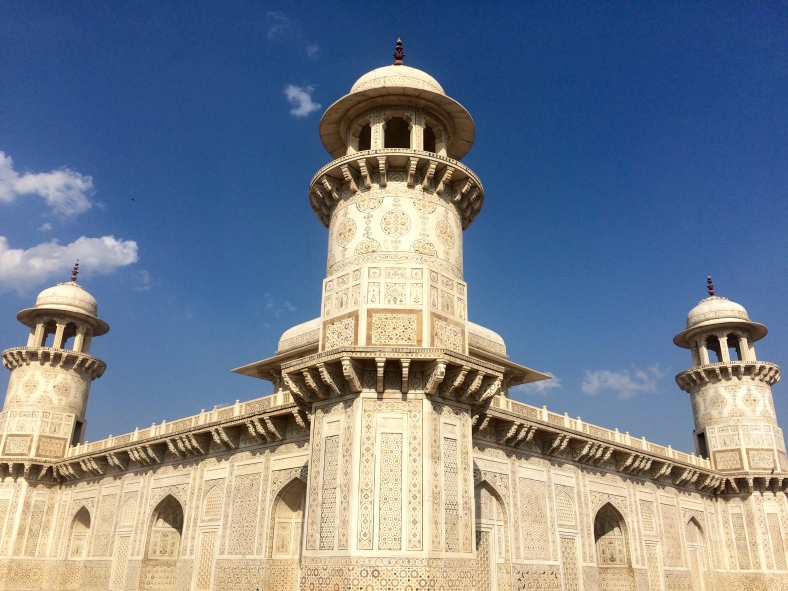
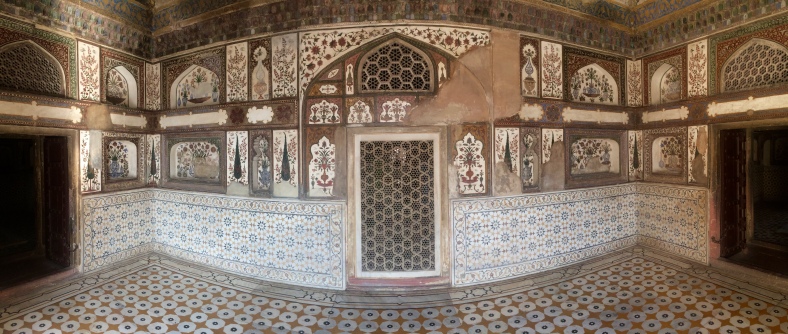
Then we went to the Mehtab Bagh park which is famed for its view of the Taj Mahal from the other side of the Yamuna River. Apparently it used to be free and was nothing more than a giant sandlot, but the government swooped in and restored it back to Mughal garden status and started charging 100 rupees for foreigners to enter (5 for Indians). E and I decided not to pay the entry fee, but instead we walked down to the end of the road where you could also see the Taj, although partially obscured by tree branches. I realized that if we walked through the woods to our right, we might get a better view. So we headed that way. Almost immediately a group of children appeared and started telling us in broken English to turn around and go back. They were clearly assigned to keep people out of this area so that no one could get a free view of the Taj. We ignored them and pressed on. When we got to an open area where we could clearly see the Taj, we tried taking pictures, but one of the kids kept swinging a stick at us and blocking us from taking photos. He even accidentally hit Elizabeth with the stick. It was ridiculous.
After that we asked our driver to let us explore a different park. We thought there was a Taj Mahal viewing point inside the park. The park was massive and we roamed it for over an hour without finding any view point. It was a very nice park, full of men, dogs, ice-cream-stealing monkeys, and flowers. But as dusk arrived, some sketchy characters came out so we bailed and walked back to our tuk tuk via the street instead of back through the park.

After so much walking, we were completely beat. We just wanted to go back to our hotel. However, our tuk tuk driver said he was going to take us to some “factories where x, y, & z are made.” I have been in India long enough to know what this means. This means that you’re going to some overpriced touristy gift shops and hard-pressed to buy something. Meanwhile, your tuk tuk driver is going to get some monetary kickback for bringing you there. Elizabeth and I were NOT interested. I told our driver that we were too tired and wanted to go directly back to the hotel. However, he explained candidly that he and his family receive financial support from the owners of these shops and it would be really helpful if we would go “just look; no need to buy.” I appreciated his honesty and felt bad for him because he had just driven us around for six hours for the bargain price of $1/hour. So we agreed to go to two out of four of the stores, which was annoying but uneventful.
We finally made it back to the hotel well after dark, had a terrible dinner at the restaurant next door, and crashed out around 9:30pm.
We had to get up by 5am the next day to get to the Taj Mahal by dawn, when they start letting people in. It was a bit of a fiasco trying to figure out which gate to enter and where to buy our tickets, basically because we didn’t read the guidebook in advance. Rookie mistake. So we wasted a lot of time walking from one gate to another. Finally, we asked directions from this guy and he ended up being a Taj Mahal guide on his way to work. He seemed legit so we hired him to be our guide. It was nice to have him with us. Not only did he teach us things about the Taj, but he was also our personal photographer all morning.
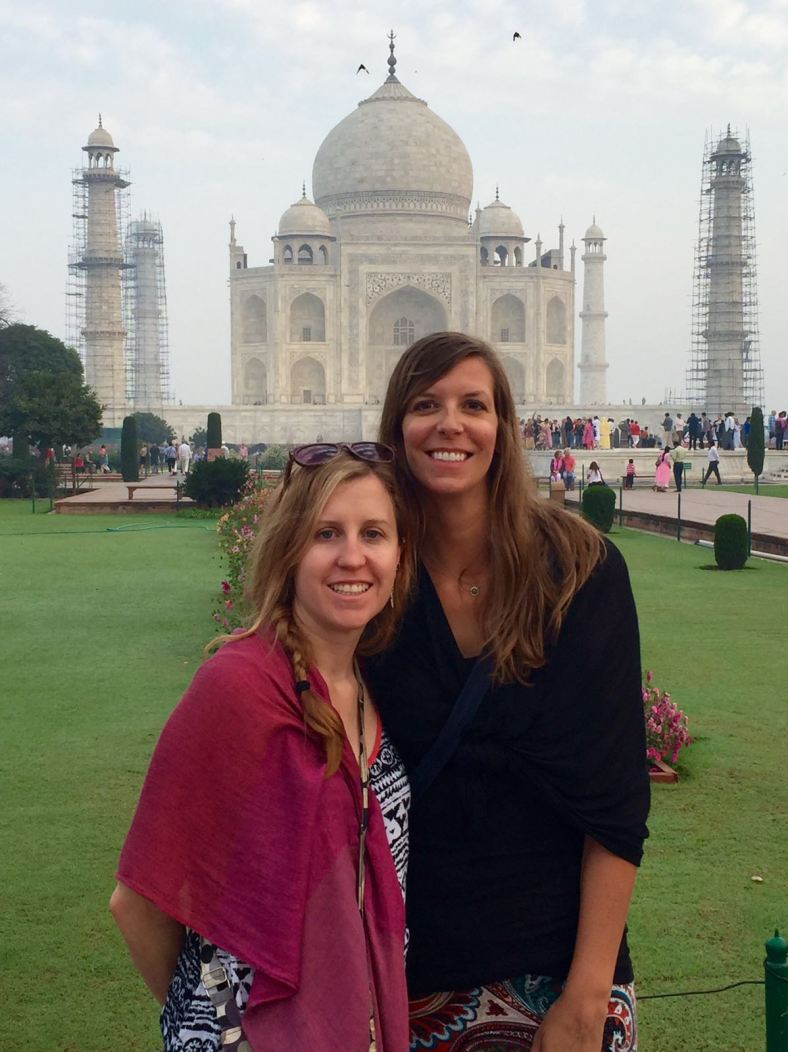
If you’re like me, you don’t research stuff very much and maybe don’t know anything about the Taj Mahal. So here are a few interacting factoids:
The Taj Mahal was built in honor of Mumtaz Mahal, the third and favorite wife of Mughal Emperor Shah Jahan, after she died in while giving birth to their 14th child. She was 40 years old. They are both buried in crypts beneath the building. Construction started in 1632, one year after she died, and it took 22 years to complete. It took more than 22,000 workers and 1,000 elephants to build the Taj. A few years after completion, the Emperor’s son had him arrested and locked in a fort where he could only view the Taj from a window until he died 8 years later. Legend has it that Shah Jahan had the hands of the architect and the thumbs of the workers cut off after the building was completed so that an identical building could never be made, but I read that this is a myth. It is made of all-white marble and inlaid with 28 different kinds of precious and semi-precious stones, many of which were stolen by the British during an attack in 1857. It is one of the world’s most symmetrical buildings. Because of the reflective qualities in the white marble, the Taj appears to change color throughout the day. It has a pinkish hue at sunrise, is glowing white during the day, and appears golden in moonlight. On full moon nights you can actually enter the Taj complex after dark. It is supposed to be spectacular. However, unfortunately the walls are rapidly turning yellow due to air pollution and acid rain. In order to better preserve the building, no large factories exist in Agra and the ones that do run on electric energy only. Also, no cars are allowed within several blocks of the complex. The Taj Mahal 17-hectare complex contains a working mosque and is therefore closed on Fridays for prayer. The Taj was declared one of the “New” Seven Wonders of the World in 2007.
It really is a magical experience to stand before such an incredible structure. It’s beauty is unparalleled. However, the massive crowds, lines, pushing, and waiting for photo ops do detract from the overall experience. It costs 750 rupees ($12) for foreigners to enter (20 rupees for Indians!), so it’s pricey but worth it. However, the inside of the the building is nothing to write home about, unlike the Baby Taj. We entered around 7:30am and finished around 9:15, so it really doesn’t take too much time to explore.
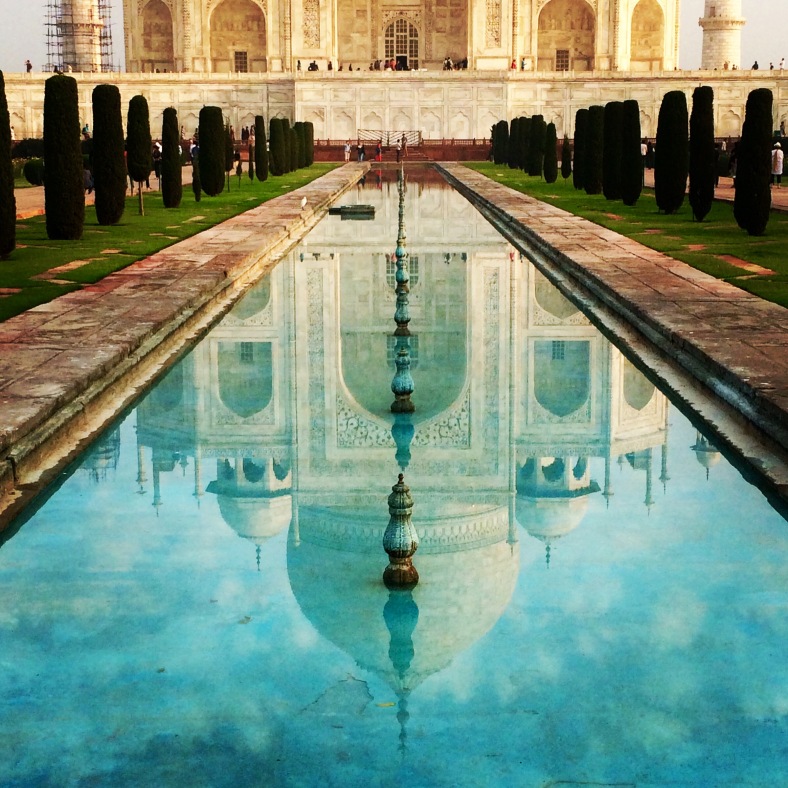


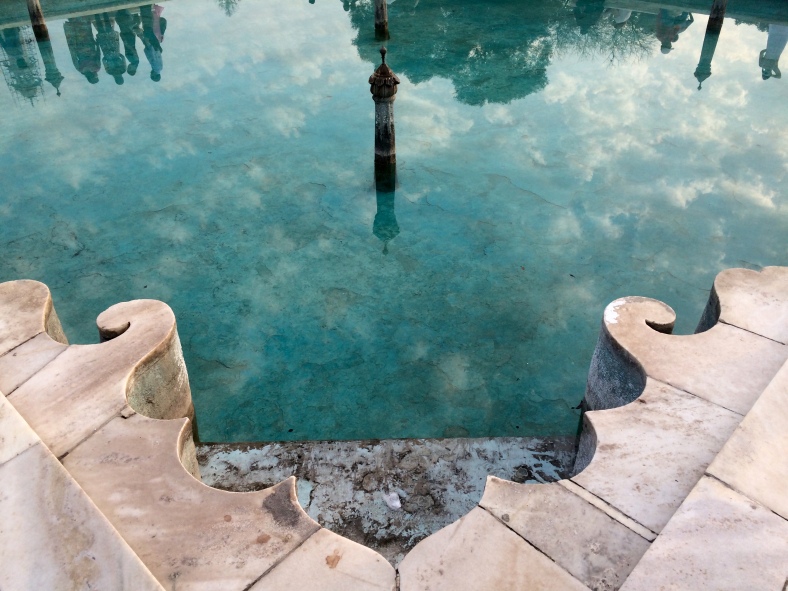
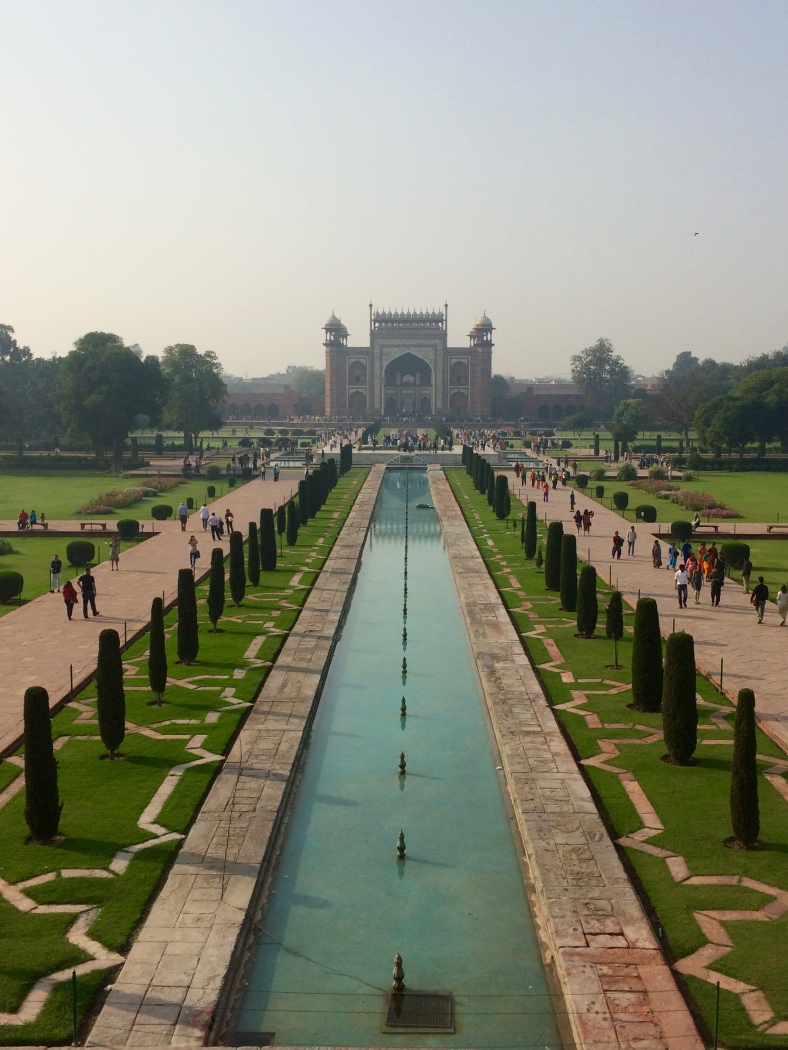
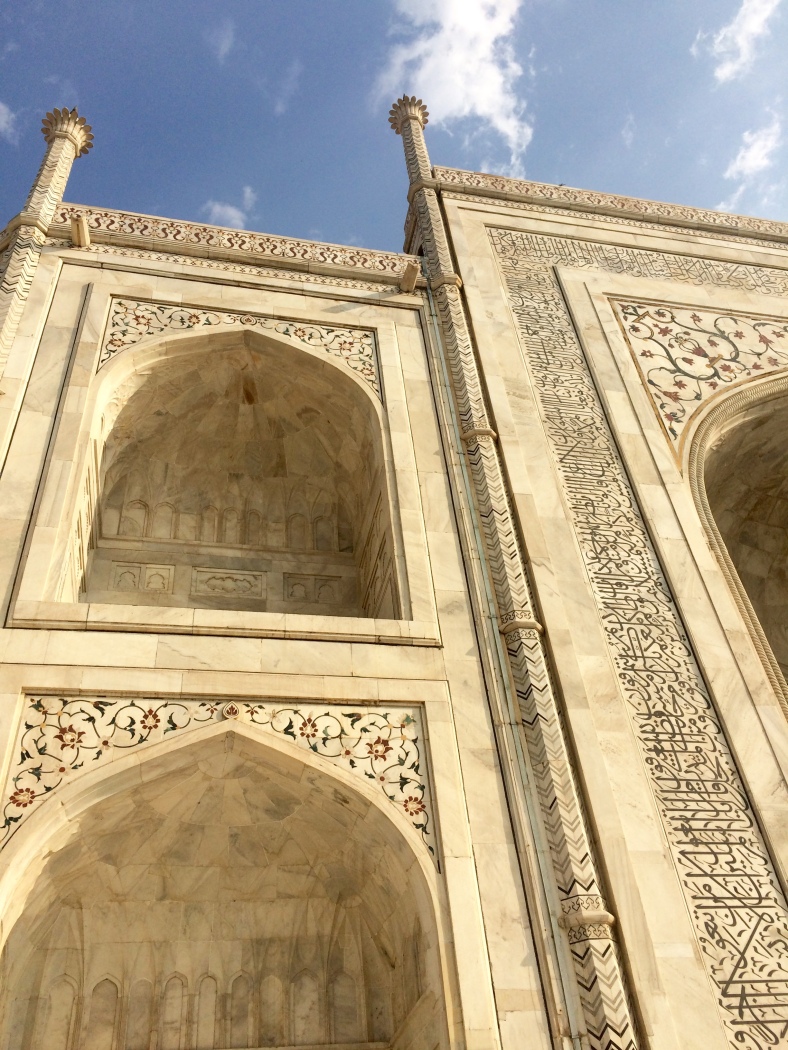

Outside wall detail

Precious stone inlay
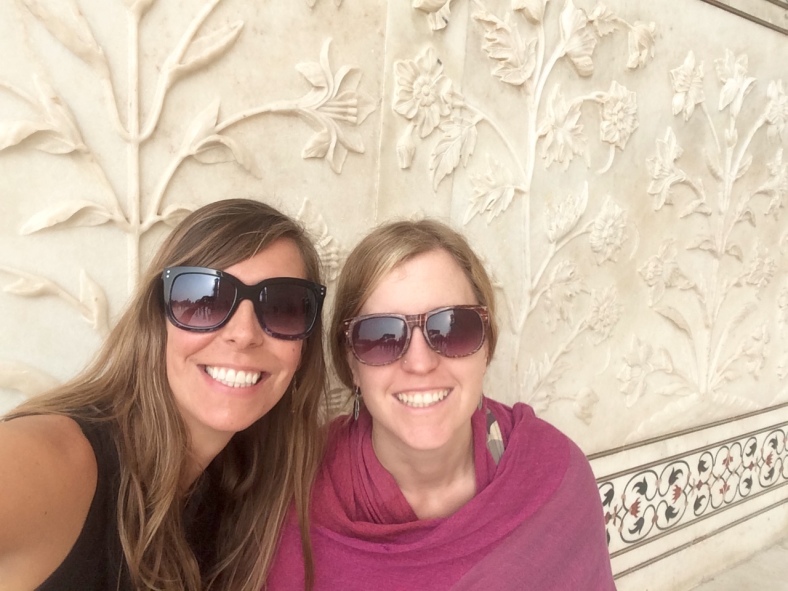
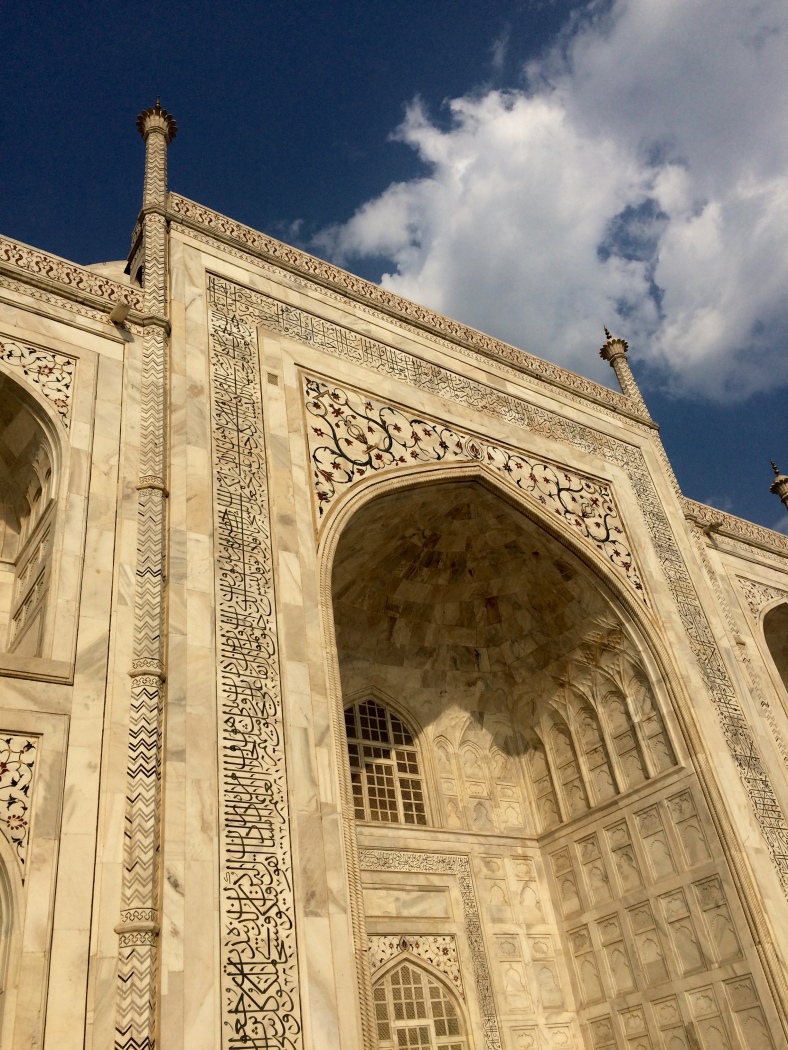

The mosque
After the Taj and some breakfast with a view (and god-awful food… I ordered the spaghetti omelette because it sounded really weird. It was.), we hurried back to our hotel to check out and catch a bus back to Delhi.
Overall, we really enjoyed our short time in Agra. Here’s a few more random photos from our 24 hours there.
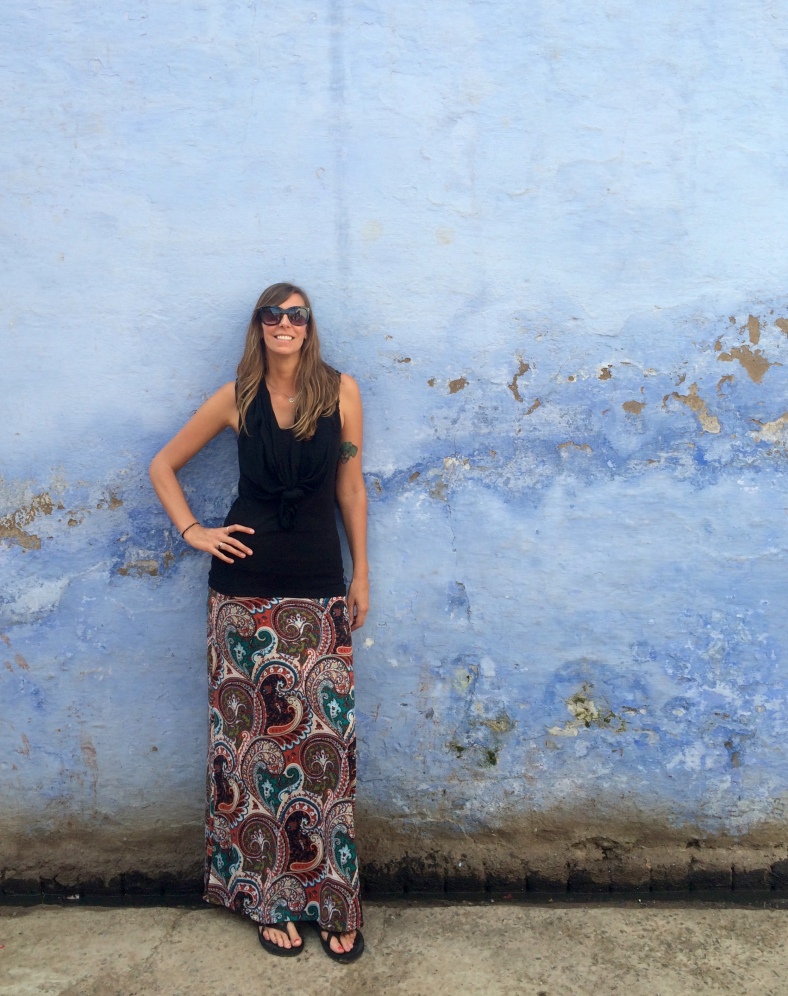
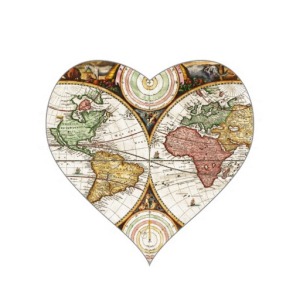



















































nice one, beautiful pics too.
LikeLiked by 1 person
nice one. beautiful pics too
LikeLiked by 1 person
Thank you so much!
LikeLike